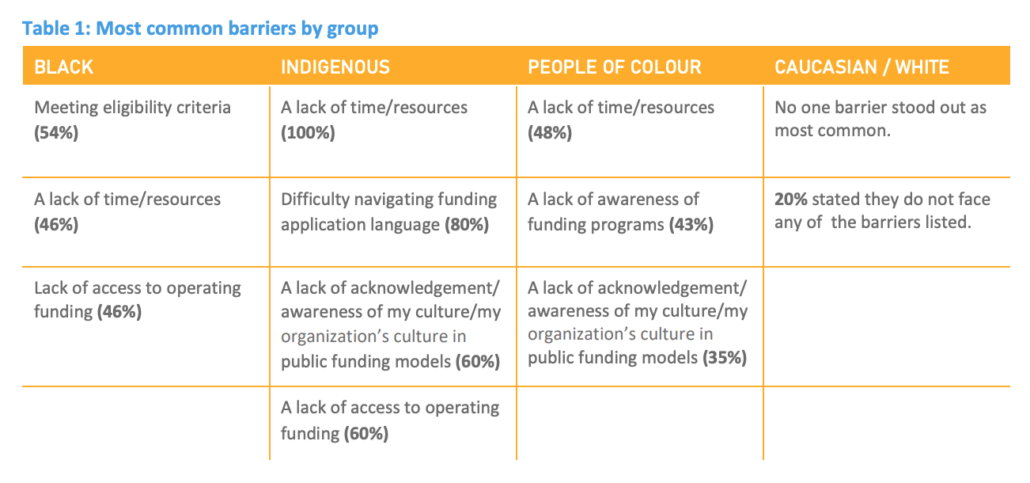BIPOC representation remains low among publicly-funded documentary production in Canada and despite initiatives to earmark funding, an industry-wide system of data collection, monitoring and reporting still does not exist, according to an analysis undertaken by the DOC Institute.
Funded by Ontario Creates, Nordicity was engaged to analyze three years of funding awarded to Black, Indigenous, and People of Colour (BIPOC) documentary creators in the Canadian film and television industry with an eye to gauging how successful BIPOC creators are at securing funding compared to non-BIPOC applicants.
The analysis, which included Telefilm Canada, Canada Media Fund (CMF), National Film Board (NFB), and TVO, found that right now tracking of such data is inconsistent across the industry. CBC declined to participate in the study citing limited resources. The analysis also included a survey of documentary creators.
Of the participating funders, TVO is the only one that collects data on BIPOC creators. It showed a decline in the number of BIPOC creatives supported between 2017 and 2020 with anecdotal evidence suggesting representation is low across the industry. Based on the limited data Nordicity was able to collect, less than one-fifth of documentary creators supported identify as Indigenous with funding provided to Indigenous works higher in documentary production (16%) than in the broader film and television industry (less than 1% based on research conducted by Nordicity and the Racial Equity Media Collective).
Nordicity also found there is no data collected on the distribution of tax credits which make up a large portion of funding to the industry and 27% of total documentary production funding specifically.
The survey indicates that caucasian/white identifying documentary creators apply for funding more often than their BIPOC counterparts with 88% of respondents who applied at least once between 2017-20 identifying as caucasian, compared to 67% of Black survey respondents, 20% of those identifying as Indigenous, and 47% identifying as a Person of Colour.

Among the barriers cited were a lack of time and resources, lack of access to operating funding, difficulty navigating grant application language, and a lack of acknowledgement or awareness of applicants’ culture in public funding models.
White creators were additionally found to be typically more successful at retaining the IP for funded projects than their BIPOC counterparts. The majority (80%) of caucasian/white survey respondents said they typically retain the IP for projects they get funded, compared to just 61% of respondents identifying as People of Colour and 54% identifying as Black.
Subscribe Now – Free!
Broadcast Dialogue has been required reading in the Canadian broadcast media for 30 years. When you subscribe, you join a community of connected professionals from media and broadcast related sectors from across the country.
The Weekly Briefing from Broadcast Dialogue is delivered exclusively to subscribers by email every Thursday. It’s your link to critical industry news, timely people moves, and excellent career advancement opportunities.
Let’s get started right now.




